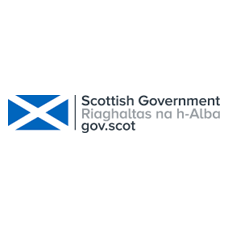What is the link between happiness and productivity?
Unlock the secrets behind empowering, engaging and motivating your entire workforce.
What is the link between happiness and productivity?
If we can drive individual happiness, we can drive engagement and in turn, we can drive productivity.
What is Productivity?
In broad terms, productivity can mean different things, depending on the context. It is thought that the word productivity first appeared in an article by French economist and physician Quesnay in 1766. Since then diverse meanings of productivity have been coined by different people and organisations.
Solomon Fabricant (1959)
“Productivity is always a ratio of output and input. This is the most common definition of productivity.”
Kendrick and Creamer (1965)
“Functional definitions for partial, total factor and total productivity. Loose description of relationship usually in ratio form, between outputs and all of the associated inputs in real terms.”
Alan Lawlor (1985)
“At its simplest meaning, productivity is the relationship between goods produced and sold or service provided, the output, and the resources consumed in doing it (Output/input = productivity). Productivity is a comprehensive measure about how efficiently and effectively organisations satisfy their aims.”
Mali (2008) in Okoye, P. & Ezejiofor, R. (2013)
“Productivity is the measure of how well resources are brought together in organisations and utilised for accomplishing a set of results.
A more recent example comes from Writer Charles Duhigg who in his book Smarter Faster Better, defines productivity as “making certain choices in certain ways that moves us from being merely busy to genuinely productive”.
Productivity is not just about how fast we work, or how much can be produced, but working effectively and intelligently. But, before you can achieve productivity, you must ensure that your staff are happy and that they want to work at all.
What is happiness?
When we think about what might make us happy, many would announce with certainty, that success, money, weight loss, marriage, children, pets or some similar concept, is the key to unlocking their own happiness. It is true that in the short term any of these things could make us happy, but genuine long-term happiness relies on more than circumstance, money or material items.
In an influential article that is frequently cited by professionals in this field, Lyubomirsky et al. present the ‘Happiness Pie’ model. This model explains that how happy we are comes down to three main factors:
- 50% Genetic - who we are - our genes.
- 10% Environment - the circumstances in which we live.
- 40% Process - attitude, optimism and the way we think, act and handle situations
This is an exciting concept for leaders who are seeking the key to unlocking happiness across their workforce. We cannot change our own basic nature or that of our staff. However, if we can establish the very best environment and create an atmosphere in which a positive, happy mindset can thrive, we can then unlock happiness.
Other experts in this field believe that the key to unlocking happiness starts by identifying the various types of happiness that we experience.
Martin Seligman, Psychologist, educator and author:
Cynthia Fisher, Professor and Head of the Management Department in the Faculty of Business at Bond University:
If we can improve and align these key areas for each individual member of our team, we can:
- Motivate staff
- Increase retention
- Improve loyalty
- Maximise effort
- Create an inclusive workplace culture
- Increase productivity
- Increase profitability
- Increase sales
- Increase customer satisfaction
Happiness and temporary workers
Creating an atmosphere and a culture in which happiness can thrive is all the more important if you utilise both temporary and permanent staff. You do not have long to make a great and lasting impression, so it is important that, for the short time a temporary worker is with you, you are maximising their potential to succeed.
We can’t make people be happy, but we can create an environment in which happiness can thrive. Like ripples in a pond, all members of our team - from our leaders to our temporary agency staff, will become advocates for happiness, leading by example and influencing all those around them.
“Happier employees = happier customers = successful companies”
Jenn Lim


























